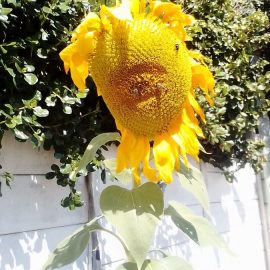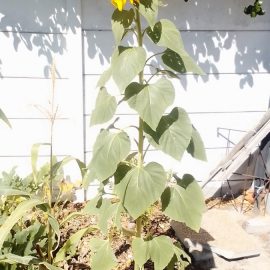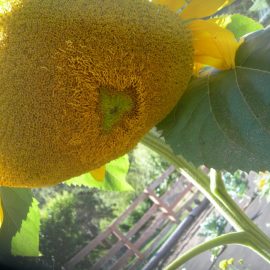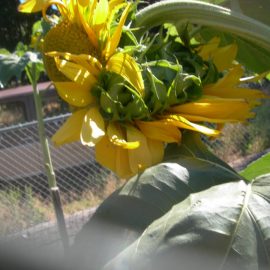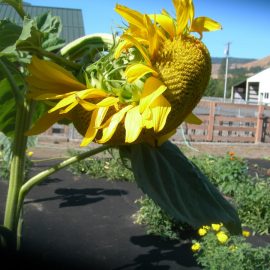Sunflower downy mildew (Plasmopara helianthi) – identify and control
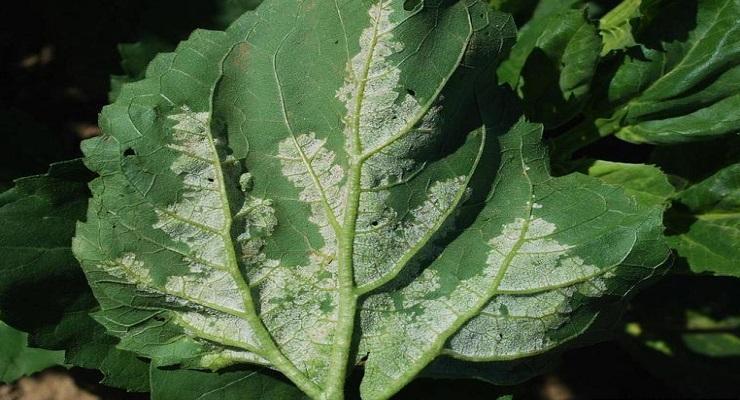
Sunflower downy mildew, Plasmopara helianthi appeared in sunflower crops in the late nineteenth century in North America. It arrived in Europe in 1940, and since then it has spread to all crops causing damage of up to 60%, depending on climatic conditions.
Symptoms. The first symptoms are observed in young plants, which appear from infected seeds. They remain dwarf, with a maximum height of 25-30 cm and short internodes. It has small, discolored, wrinkled leaves and poorly developed roots. Large yellow areas appear on the upper face of the leaves, in front of which on the lower face of the leaves starting from the peduncle of the leaf, along the main veins, and between veins, a white fuzz.
The plants can form a small capitulum, 1-5 cm in diameter, but they do not bloom and do not make seeds. Infected mature plants later show yellow spots on the leaves, near the veins, areas that turn brown in a short time. In front of them, a white fuzz of mycelium appears on the underside of the leaves.
Infected plants form later smaller capitulum. They bloom before healthy plants and can sometimes bear fruit, but the seeds are infected without showing any visible symptoms.
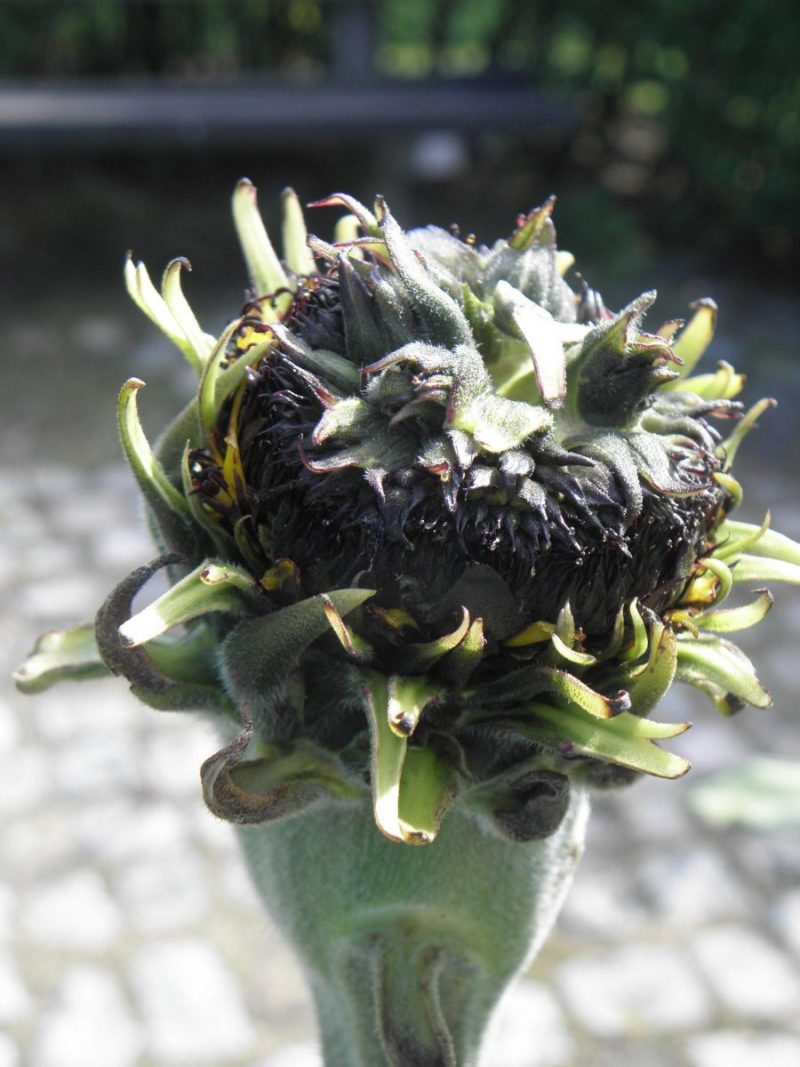

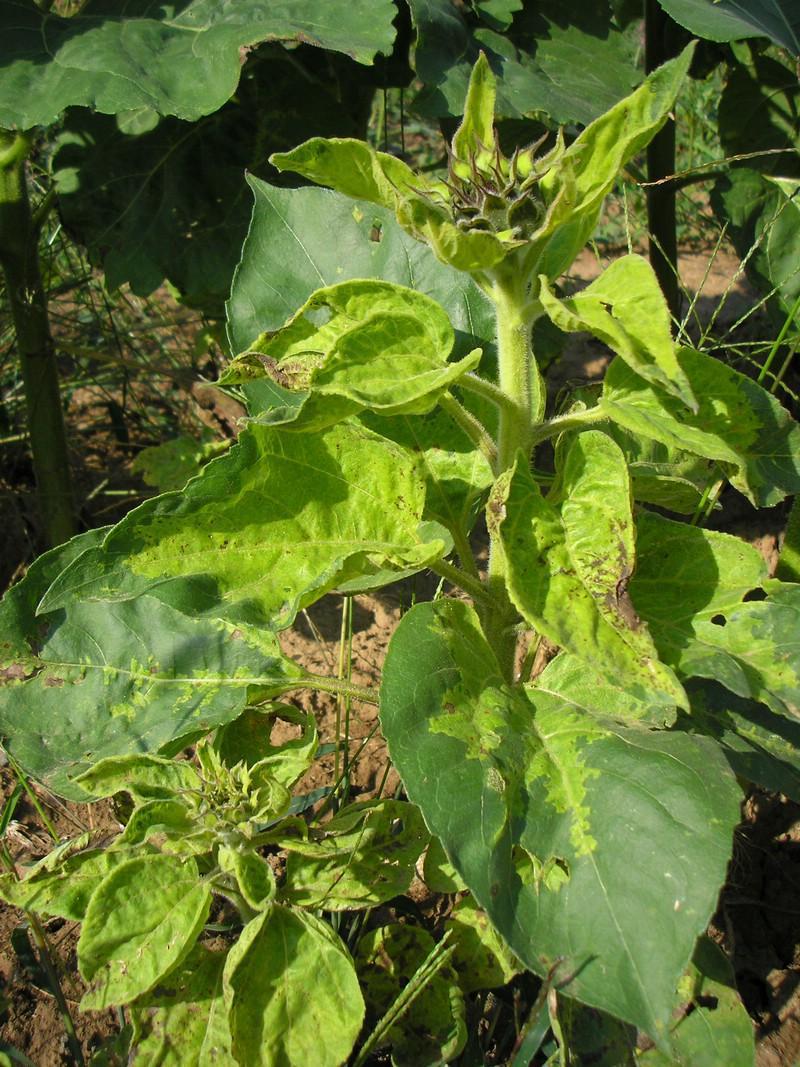
In the necrotic tissues, on the mature leaves, spherical spores of resistance appear, golden-yellow, provided with a thick membrane. The pathogen can also attack other plants in the Compositae family.
The pathogen is Plasmopara helianthi. The fungus is transmitted from one year to another through the parasitic mycelium from the infected seeds and the spores left in the soil in the plant debris. Since sunflower monoculture is not practiced, the main source of infection in the following year is the infected seeds.
Prevention and control. Since the sunflower downy mildew is transmitted through seeds, they must come from seed lots, where the fungus was not present. On the lands where the presence of the pathogen was found, the sunflower will not return until after 7-8 years. The sunflower harvest will be done at the optimal time, to avoid shaking the seeds and therefore the appearance of newly infected plants in the next year, which could be a primary source of infections. The most efficient method is the cultivation of resistant varieties.
Before planting, it is recommended to treat the seeds with specific fungicides.
During the growing season, treatments with specific fungicides are performed.
Recommended products
-
You can find products on a different store
Change Store -
You can find products on a different store
Change Store -
You can find products on a different store
Change Store -
You can find products on a different store
Change Store -
You can find products on a different store
Change Store -
You can find products on a different store
Change Store -
You can find products on a different store
Change Store -
You can find products on a different store
Change Store -
You can find products on a different store
Change Store -
You can find products on a different store
Change Store -
You can find products on a different store
Change Store -
You can find products on a different store
Change Store -
You can find products on a different store
Change Store -
You can find products on a different store
Change Store -
You can find products on a different store
Change Store -
You can find products on a different store
Change Store -
You can find products on a different store
Change Store -
You can find products on a different store
Change Store -
You can find products on a different store
Change Store -
You can find products on a different store
Change Store -
You can find products on a different store
Change Store -
You can find products on a different store
Change Store -
You can find products on a different store
Change Store -
You can find products on a different store
Change Store














































































































































































































































































































































































































































